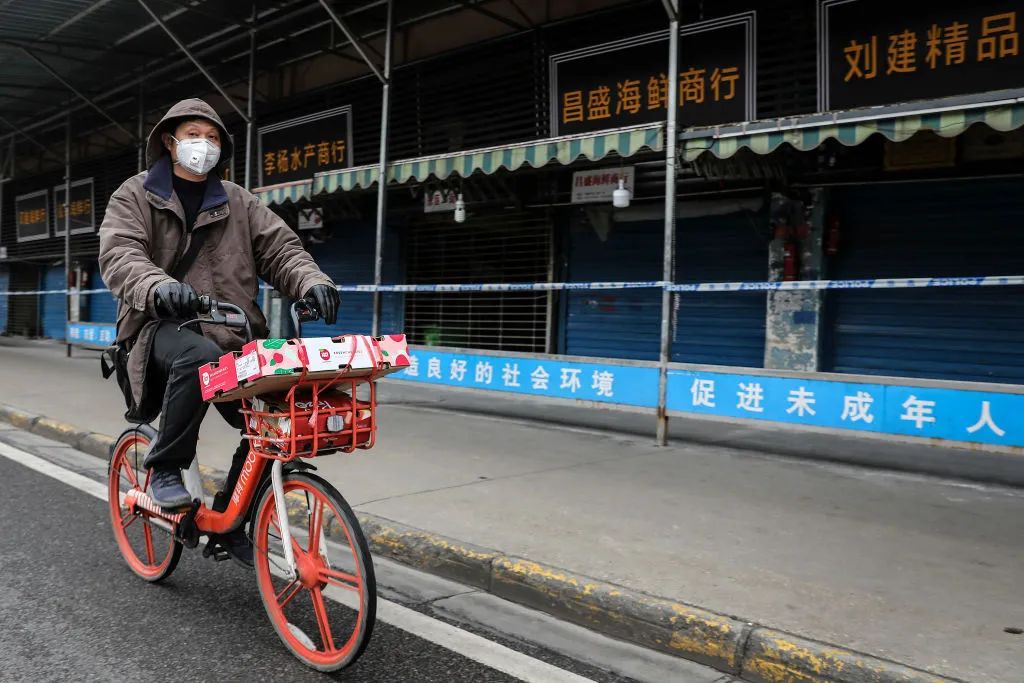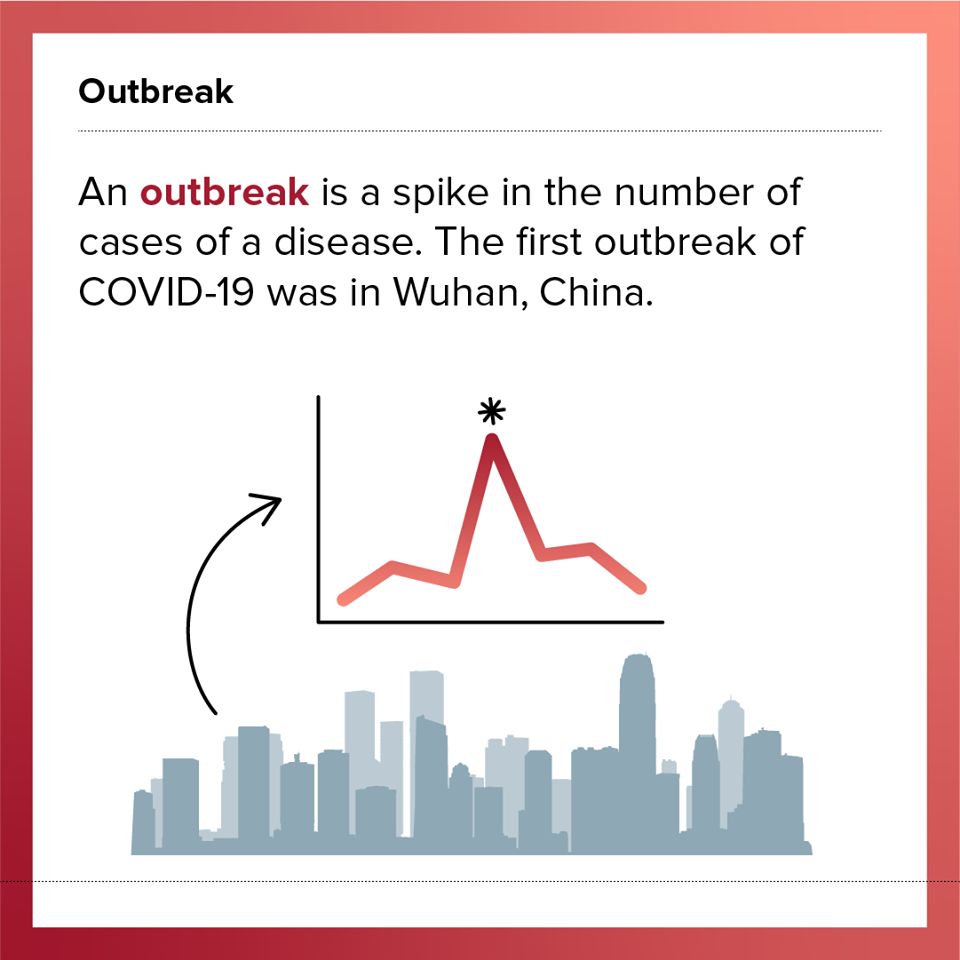Dr. Boarhead’s Summary of Global Updates on the 2019 Novel Coronavirus: 15th March 2020
1. bioRxiv:
Researchers cannot accurately conclude that the Huanan seafood market is the origin of SARS-CoV-2. However, 16 genomes assigned to 10 haplotypes indicate a circulating infection within the market in a short term, which led to the outbreak in Wuhan.
<7 Mar.>
[key info]
The seafood market caused the outbreak in Wuhan but may not be the origin.
[link]
https://www.biorxiv.org/content/10.1101/2020.03.04.976662v1

2. CDC:
Cruise ship passengers are at increased risk of person-to-person spread of infectious diseases, including COVID-19. Travelers, particularly those with underlying health issues, should defer all cruise ship travel worldwide.
<8 Mar.>
[key info]
The US CDC recommends avoiding all cruise ship travel.
[link]
https://wwwnc.cdc.gov/travel/page/covid-19-cruise-ship

3.
Science
:
Over the length of its 30,000-base-pair genome, SARS-CoV-2 accumulates an average of about 1 to 2 mutations per month, which is about 2 to 4 times slower than the flu. Using these little changes, researchers can draw up phylogenetic trees, make connections between different cases, and gauge whether there might be undetected spread.
<9 Mar.>
[key info]
Viral mutation is very common and should not be overinterpreted.
[link]
https://www.sciencemag.org/news/2020/03/mutations-can-reveal-how-coronavirus-moves-they-re-easy-overinterpret

4. CDC:
The interim guidelines for collecting, handling, and testing clinical specimens from persons under investigation have been updated, which include combined nasopharyngeal and oropharyngeal (NP/OP) specimens as an option for upper respiratory specimen collection. This will cut the amount of testing reagents needed in half.
<9 Mar.>
[key info]
The US CDC has revised its rules of testing to collect one specimen swab instead of two.
[link]
https://www.cdc.gov/coronavirus/2019-ncov/lab/guidelines-clinical-specimens.html

5. American Society for Microbiology:
The supply shortage for SARS-COV-2 PCR reagents is a great challenge. As the number of tests increases dramatically over the coming weeks, clinical labs may be unable to deploy them without critical components. Increased demand for testing may exhaust supplies needed to perform the testing itself.
<10 Mar.>
[key info]
There is a severe shortage of testing reagents in the US.
[link]
https://asm.org/Articles/Policy/2020/March/ASM-Expresses-Concern-about-Test-Reagent-Shortages

6. medRxiv:
According to the clinical features of 25 discharged patients, there is a significant inverse correlation between serum D-Dimer level and the duration of antiviral treatment. Lymphocyte concentration is positively correlated with the duration of virus reversal.
<10 Mar.>
[key info]
The level of serum D-Dimer may decide whether a patient has recovered from COVID-19.
[link]
https://www.medrxiv.org/content/10.1101/2020.03.06.20031377v1.full.pdf

7.
Social Science Research Network
:
By dynamic observations of the serum biochemistry profile and chest CT imaging of 12 amongst 13 COVID-19 patients outside Wuhan, serum amyloid A (SAA) is identified as a potential biomarker linked with clinical severity.
<10 Mar.>
[key info]
SAA may be linked with the severity of patients.
[link]
https://papers.ssrn.com/sol3/papers.cfm?abstract_id=3546066&utm_source=EC&utm_medium=Connect

8.
Social Science Research Network
:
COVID-19 patients with diarrhea suffer discomfort longer. The elimination of SARS-CoV-2 from the digestive system takes much more time than from the respiratory system.
<10 Mar.>
[key info]
Viruses in the digestive system are harder to eliminate.
[link]
https://papers.ssrn.com/sol3/papers.cfm?abstract_id=3546120&utm_source=EC&utm_medium=Connect

9.
Social Science Research Networ
k:
The decrease of IL-6 is closely positively correlated to effective treatment, while the increase of IL-6 indicates disease progression.
<10 Mar.>
[key info]
IL-6 level can be used as a marker of progression in severe patients.
[link]
https://papers.ssrn.com/sol3/papers.cfm?abstract_id=3548761&utm_source=EC&utm_medium=Connect

10.
Social Science Research Network
:
The average contagious period of SARS-CoV-2 infected patients is 20 days. Longer observation period and more than 2 series of negative viral test are necessary for patients older than 65 years.
<10 Mar.>
[key info]
Old people may still be contagious after 2 negative RT-PCR results.
[link]
https://papers.ssrn.com/sol3/papers.cfm?abstract_id=3548769&utm_source=EC&utm_medium=Connect

11. WHO:
Director-General Tedros said, “WHO has been assessing this outbreak around the clock and we are deeply concerned both by the alarming levels of spread and severity, and by the alarming levels of inaction. We have therefore made the assessment that COVID-19 can be characterized as a pandemic.”
<11 Mar.>
[key info]
The WHO characterizes COVID-19 as a pandemic.
[link]
https://www.who.int/emergencies/diseases/novel-coronavirus-2019/events-as-they-happen

12.
Nature
:
Labs are scrambling to get their hands on transgenic animals that can be used to study SARS-CoV-2 and test drugs and vaccines, as ordinary mice seem resistant to infection by the virus.
<11 Mar.>
[key info]
Animals used in labs to study the virus are in short supply.
[link]
https://www.nature.com/articles/d41586-020-00698-x

13.
New England Journal of Medicine
:
Direct-to-consumer telemedicine, an approach to forward triage that allows patients to be efficiently screened, is both patient-centered and conducive to self-quarantine. It protects patients, clinicians, and the community from exposure. It can allow physicians and patients to communicate 24/7, using smartphones or webcam-enabled computers. Respiratory symptoms, which may be early signs of COVID-19, are among the conditions most commonly evaluated with this approach.
<11 Mar.>
[key info]
Telemedicine may be helpful in controlling the outbreak.
[link]
https://www.nejm.org/doi/full/10.1056/NEJMp2003539?query=featured_home

14. Harvard T. H. Chan School of Public Health:
An outbreak is a spike in the number of cases of a disease; an epidemic is ongoing transmission of a disease, with no clear endpoint; a pandemic means that there is sustained community-level transmission on two or more continents. None of these terms define the severity of the disease, only the scope. Some tiny outbreaks can be quite serious, while some pandemics are very mild.
[key info]
The fact that COVID-19 has become a pandemic does not necessarily mean that it is growing more and more severe.
[link]
https://www.facebook.com/harvardpublichealth/posts/10157974951501772



15. WHO:
SARS-CoV-2 infects people of all ages. However, evidence to date suggests that two groups of people are at higher risk of getting severe COVID-19. These are older people and those with underlying medical conditions.
<11 Mar.>
[key info]
Older people are more likely to catch serious disease.
[link]
https://www.who.int/docs/default-source/coronaviruse/situation-reports/20200311-sitrep-51-covid-19.pdf?sfvrsn=1ba62e57_4

16.
Lancet
:
As more cases arrive in international locations with similar transmission potential to Wuhan before the introduction of travel control measures, it is likely that many chains of transmission will fail to establish initially but might lead to new outbreaks eventually.
<11 Mar.>
[key info]
Some international cities may face a similar outbreak to Wuhan.
[link]
https://www.thelancet.com/journals/laninf/article/PIIS1473-3099(20)30144-4/fulltext#%20

17. CDC:
If you are sick, you should wear a facemask when you are around other people and before you enter a healthcare provider’s office. If you are not sick, you do not need to wear a facemask unless you are caring for someone who is sick (and they are not able to wear a facemask). Facemasks may be in short supply, and they should be saved for caregivers.
<11 Mar.>
[key info]
The US CDC advises people against wearing facemasks unless they get sick or care for sick people.
[link]
https://www.cdc.gov/coronavirus/2019-ncov/about/prevention.html

18.
New England Journal of Medicine
:
From 7 to 15 Jan., a total of 366 hospitalized children were enrolled in a retrospective study of respiratory infections at three branches of Tongji Hospital. SARS-CoV-2 was detected in 6 of them. The dates of illness onset were between 2 and 8 Jan., and the patients were hospitalized between 7 and 13 Jan.
<12 Mar.>
[key info]
Infections in children occurred early in the epidemic.
[link]
https://www.nejm.org/doi/full/10.1056/NEJMc2003717?query=featured_home

19.
Science
:
There is no research to support human-to-animal spread at this time. Samples from a Hong Kong Pomeranian have a small number of virus particles present, but as there is no clinical sign of disease in the animal, it is hard to say what this means. Also, it is a single case. A lot more research into the potential of the human SARS-CoV-2 to infect animals is needed.
<12 Mar.>
[key info]
Whether pets can be infected is still highly debatable.
[link]
https://www.sciencemag.org/news/2020/03/quarantine-cat-disinfect-dog-latest-advice-about-coronavirus-and-your-pets

20.
Science
:
Coronavirus is an enveloped virus with a protective fat layer. Disinfectants can tear apart that fat layer, which makes the virus fairly wimpy compared to other common viruses that have a more robust protein shell. Common household disinfectants, including soap or diluted bleach solution, can deactivate coronaviruses on indoor surfaces.
<12 Mar.>
[key info]
Soap and bleach solution can prevent the virus from spreading indoors.
[link]
https://www.sciencemag.org/news/2020/03/does-disinfecting-surfaces-really-prevent-spread-coronavirus

21. medRxiv:
SARS-CoV-2 could be detected viable in aerosols 3 hours after aerosolization, 4 hours on copper, 24 hours on cardboards, and up to 2 to 3 days on plastics and stainless steel. The median half-life estimate for the virus is around 13 hours on steel and around 16 hours on polypropylene.
<13 Mar.>
[key info]
Aerosol transmission is plausible, as the virus can remain viable in aerosols for a long time.
[link]
https://www.medrxiv.org/content/10.1101/2020.03.09.20033217v2

22. medRxiv:
Without non-pharmaceutical interventions (NPI), the number of COVID-19 cases might have shown a 67-fold increase in China. If NPIs had been conducted one week, two weeks, or three weeks earlier in China, cases could have been reduced by 66%, 86%, and 95% respectively. Among all NPIs, early detection and isolation of cases prevents more infections than travel restrictions and contact reductions.
<13 Mar.>
[key info]
Early detection and isolation is the most important measure in controlling the epidemic.
[link]
https://www.medrxiv.org/content/10.1101/2020.03.03.20029843v3

23. WHO:
More than 132,000 cases have now been reported from 123 countries and territories. 5,000 people have lost their lives. Europe has now become the epicenter of the pandemic, with more reported cases and deaths than the rest of the world combined, apart from China. More cases are now being reported every day than were reported in China at the height of its epidemic.
<13 Mar.>
[key info]
The situation in Europe is the most serious in the world.
[link]
https://www.who.int/dg/speeches/detail/who-director-general-s-opening-remarks-at-the-mission-briefing-on-covid-19---13-march-2020

24. CNN:
US President Trump declared a national emergency to free up $50b in federal resources to combat COVID-19. He said that virus testing in the US would soon happen on a large scale, and that there was worse to come for the US.
<13 Mar.>
[key info]
The US is preparing for a larger outbreak on its territory.
[link]
https://edition.cnn.com/2020/03/13/politics/donald-trump-emergency/index.html

This is issue eleven, edited on the basis of information from the official websites including but not limited to those of
The World Health Organization,
The European Centre for Disease Prevention and Control,
The Centers for Disease Control and Prevention of the United States of America, &
The Center for Infectious Disease Research and Policy of the University of Minnesota
and from the forums of FluTrackers.com.
This issue is edited by Alex Sun, Fred Wong, Dorothy Fang, and Dora Zhang under the supervision of Dr. Jason Chu and Conch Zhang.
2020 © The Chung Kwong Wui





